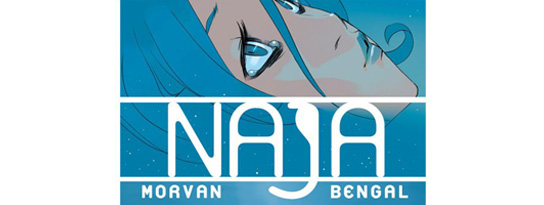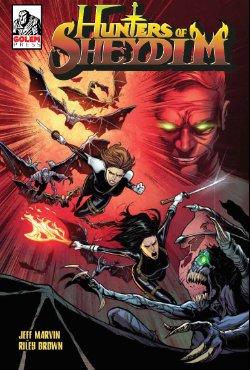Written by: Jean-David Morvan
Illustrated by:Bengal
Published by:Magnetic Press
Reviewed by:Reviewed by: Kristian Horn
There’s a lot that the modern action genre owes to director Luc Besson. One of the greatest things that ever happened to action movies was the French film La Femme Nikita. Every action film or TV show released after that film that has had a central female protagonist owes Nikita some sort of debt. La Femme Nikita took the film going world by storm upon its release and it affected the way that female action heroines would be molded for years to come. The shadow of Luc Besson’s classic looms large over the history of the action genre and despite what certain cinefiles may feel about Besson’s body of work after his first thunderclap of a movie…no one can deny the impact that Nikita had on how women would be portrayed in action movies after its release.
The reason I bring up Besson’s classic film is that Naja is a book that obviously owes much of its existence to Nikita and the similar action heroines that followed her. Naja tells the tale of a female assassin who happens to the number two hit person in her organization. She lives the solitary life of an international killer as she jet sets from country to country taking out targets for her mysterious boss named “Zero”. One day, after a particularly successful extermination, Naja returns to her home base only to find it’s been infiltrated by a mysterious figure. Her unwelcome guest subdues her and then proceeds to provide her with information about her employer and one of the assassins that work for him that turns her world upside down. Naja is left alive to contemplate the information while at the same time realizing that she has fallen in love with her captor once he leaves her…because of the fact that he is the only person to ever have been able to surprise her or best her in combat. Naja’s unwelcome guest leaves her to ponder his revelations and it eventually leads her through a quest that will take her all over the world in order to track him down and, at the same time, learn some essential truths about her own origins.
As you can see the previous paragraph practically reads like a Luc Besson plot synopsis but despite its somewhat derivative nature, Naja is an amazingly effective action tale in its own right. Much of the story is told from the first person perspective as if it had occurred in the past with the narrative spooled out slowly as the graphic novel draws on. Morvan uses this storytelling tool effectively as he offers insight after insight to Naja’s persona from the outside often explaining her state of being in perfect conjunction with the art. Many writers have botched using first person storytelling by having it overshadow the action on the page but Morvan uses it perfectly in Naja; finding the perfect balance between text and art in order to tell his story.
And what a story! Naja is a thriller that would make the likes of Besson or even Hong Kong era John Woo proud. Morvan constructs a tale of perfect intrigue from page one. From the opening set piece to the final panel Naja is a comic that delivers punch after punch. The writer keeps his readers engaged by using a mix of terrific action combined with compelling twists that kept me glued to the page. This is a comic that plays like the most engaging of action films. The story beats are perfect in every way as each progression of the tale leads to one satisfying climax after another until it finally ends up in one shattering yet satisfying conclusion. In short, Naja is comic book action/thriller storytelling done to perfection.
And while the writing itself is enthralling, the artwork ends up being just as captivating. Naja is a book that sees itself bolstered by a somewhat new trend in comic book illustration which allows the colors, rather than the line work, to provide most of the visual heavy lifting throughout the story. Bengal’s line work tends to be somewhat sparse throughout the book but it is nonetheless effective in its ability to convey motion and energy. What the artist’s style lacks in detail he makes up for with an economy of line that denotes motion and activity. While the line art is somewhat basic no stroke is wasted and Bengal’s skill at storytelling is excellent. Whatever is lacking in line detail is more than made up for by his masterful use of digital coloring techniques. While the line is what propels Naja’s story it is the color which makes it a beauty to behold. Naja is a preferct example of what European graphic novels can and have been doing…which is make comic panels look like beautiful and sumptuous works of art.
In the end Naja ends up being a perfect fix for any fan of taught action thrillers. If you are a fan of the aforementioned Besson or even John Woo before he started making American films…then you will find a lot to love in the pages of Naja. I loved the book from beginning to end and consider it one of the better comic reads I’ve experienced in a while.
#JeanDavidMorvan, #Bengal, #Naja, #MagneticPress, #GraphicNovels, #GraphicNovel, #Comics, #ComicBooks #ActionThriller





